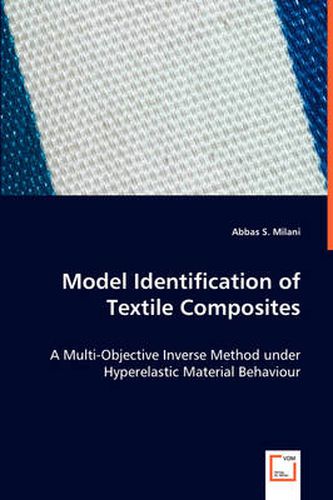Readings Newsletter
Become a Readings Member to make your shopping experience even easier.
Sign in or sign up for free!
You’re not far away from qualifying for FREE standard shipping within Australia
You’ve qualified for FREE standard shipping within Australia
The cart is loading…






This title is printed to order. This book may have been self-published. If so, we cannot guarantee the quality of the content. In the main most books will have gone through the editing process however some may not. We therefore suggest that you be aware of this before ordering this book. If in doubt check either the author or publisher’s details as we are unable to accept any returns unless they are faulty. Please contact us if you have any questions.
Numerical simulation of forming processes has become an important means for material selection, tool design, and process optimization. A critical component of simulation is an accurate material constitutive model, describing the response of the material under possible modes of deformation. The accuracy, in turn, is linked to the tests and techniques applied for the identification of constitutive models. This book elaborates on the identification of textile composite models using a new inverse method by means of a signal-to-noise weighting scheme, and two constitutive equations based on a phenomenological invariant-based approach. A full identification of the models for a typical woven fabric is applied using sets of data from standard testing methods, including a modified picture frame test. The identification framework makes it possible to include all sets of data from several deformation modes, along with their given test non-repeatabilities. The method has been presented in a general manner and it can be applied in other applications, where non-repeatability of measurements and the lack of agreement between identification parameters in different modes are practical problems.
$9.00 standard shipping within Australia
FREE standard shipping within Australia for orders over $100.00
Express & International shipping calculated at checkout
This title is printed to order. This book may have been self-published. If so, we cannot guarantee the quality of the content. In the main most books will have gone through the editing process however some may not. We therefore suggest that you be aware of this before ordering this book. If in doubt check either the author or publisher’s details as we are unable to accept any returns unless they are faulty. Please contact us if you have any questions.
Numerical simulation of forming processes has become an important means for material selection, tool design, and process optimization. A critical component of simulation is an accurate material constitutive model, describing the response of the material under possible modes of deformation. The accuracy, in turn, is linked to the tests and techniques applied for the identification of constitutive models. This book elaborates on the identification of textile composite models using a new inverse method by means of a signal-to-noise weighting scheme, and two constitutive equations based on a phenomenological invariant-based approach. A full identification of the models for a typical woven fabric is applied using sets of data from standard testing methods, including a modified picture frame test. The identification framework makes it possible to include all sets of data from several deformation modes, along with their given test non-repeatabilities. The method has been presented in a general manner and it can be applied in other applications, where non-repeatability of measurements and the lack of agreement between identification parameters in different modes are practical problems.